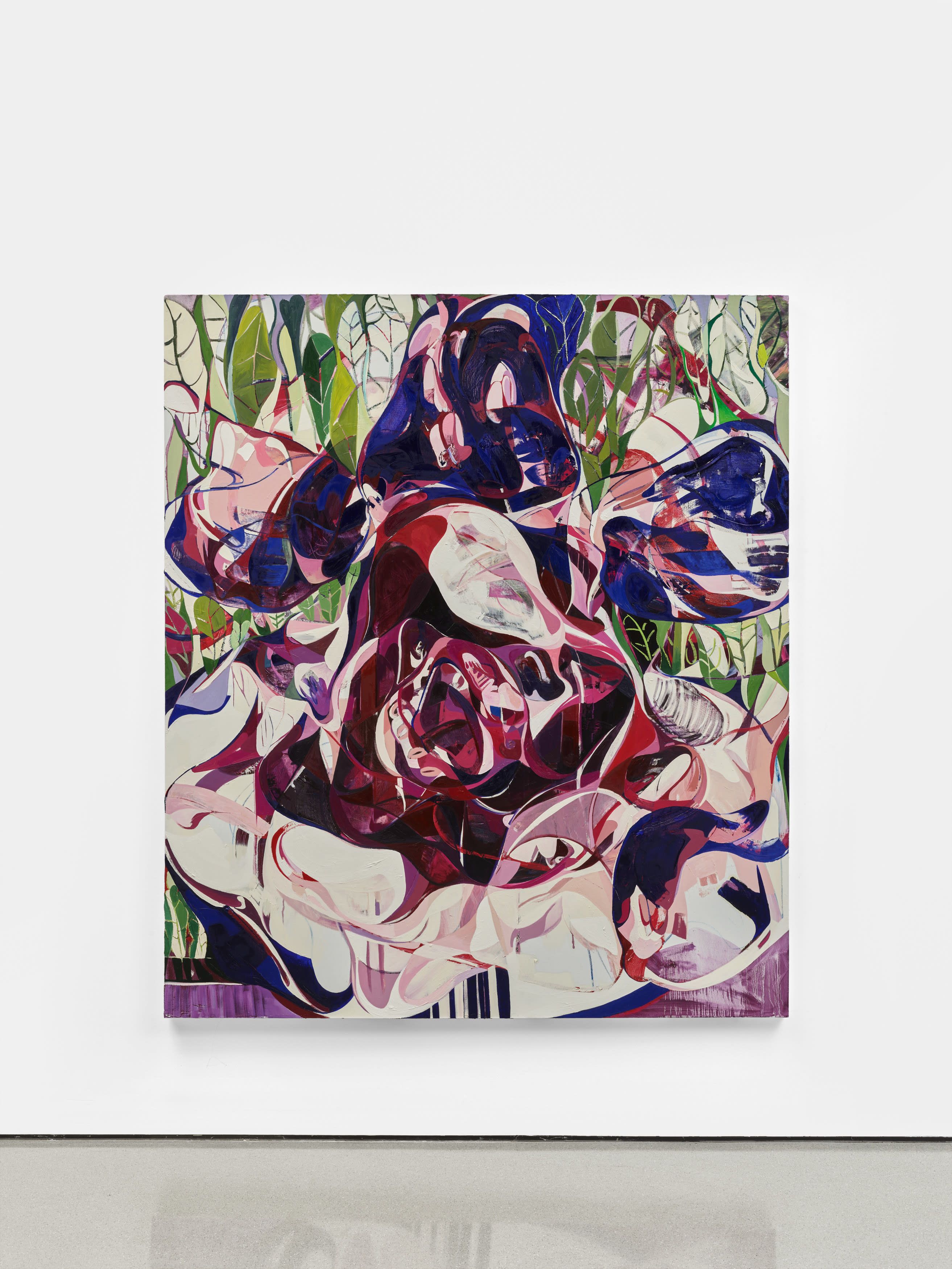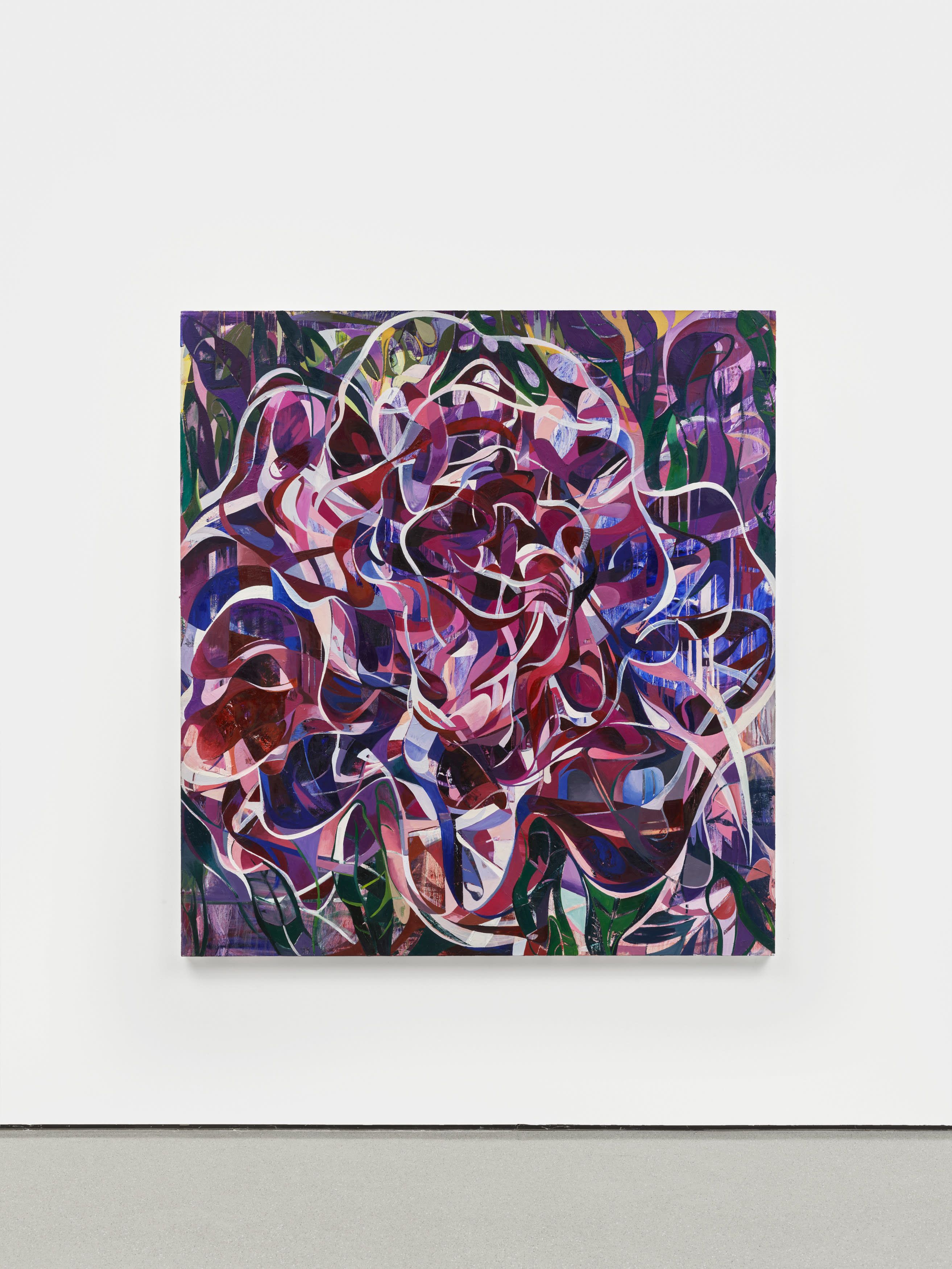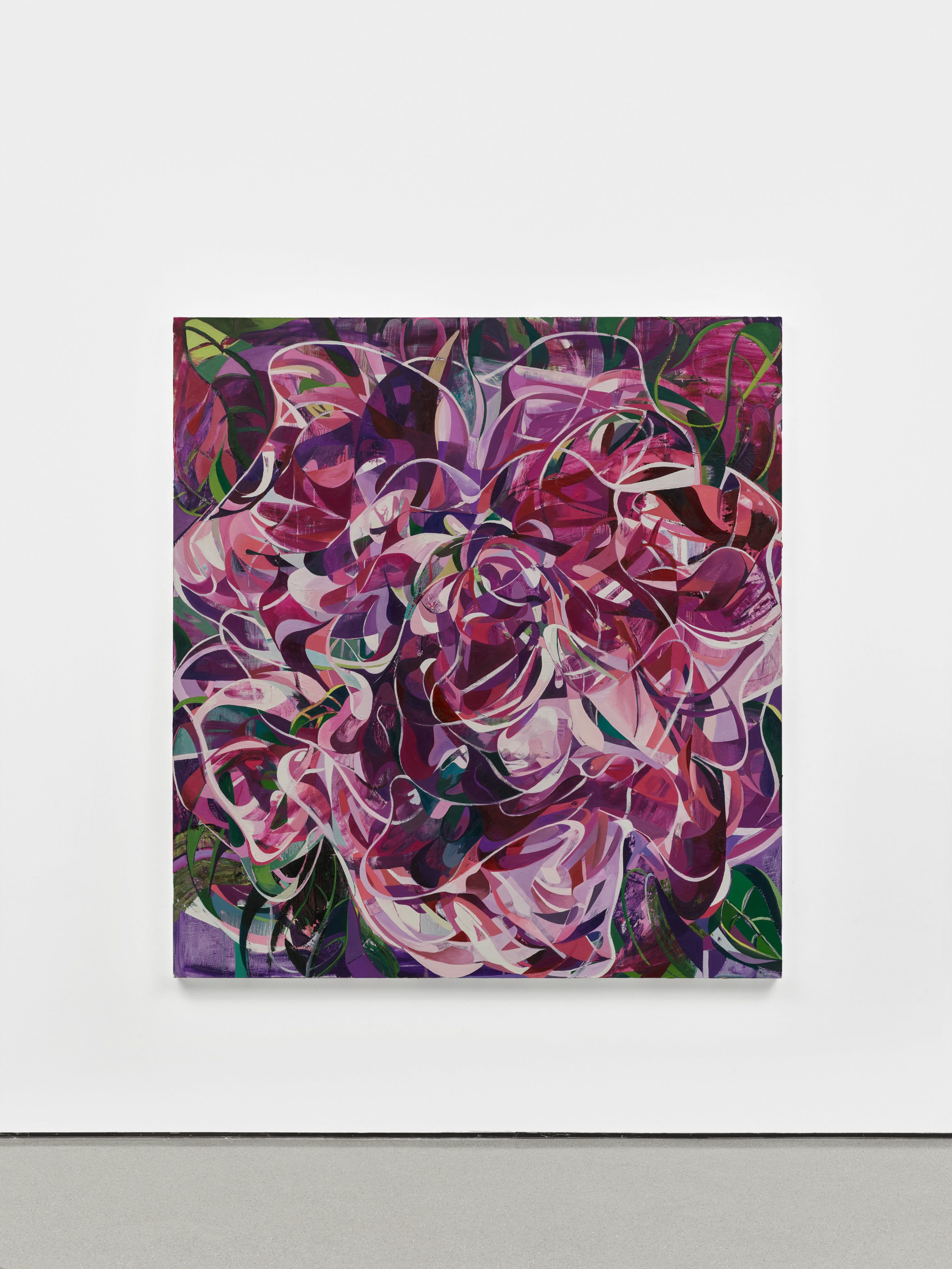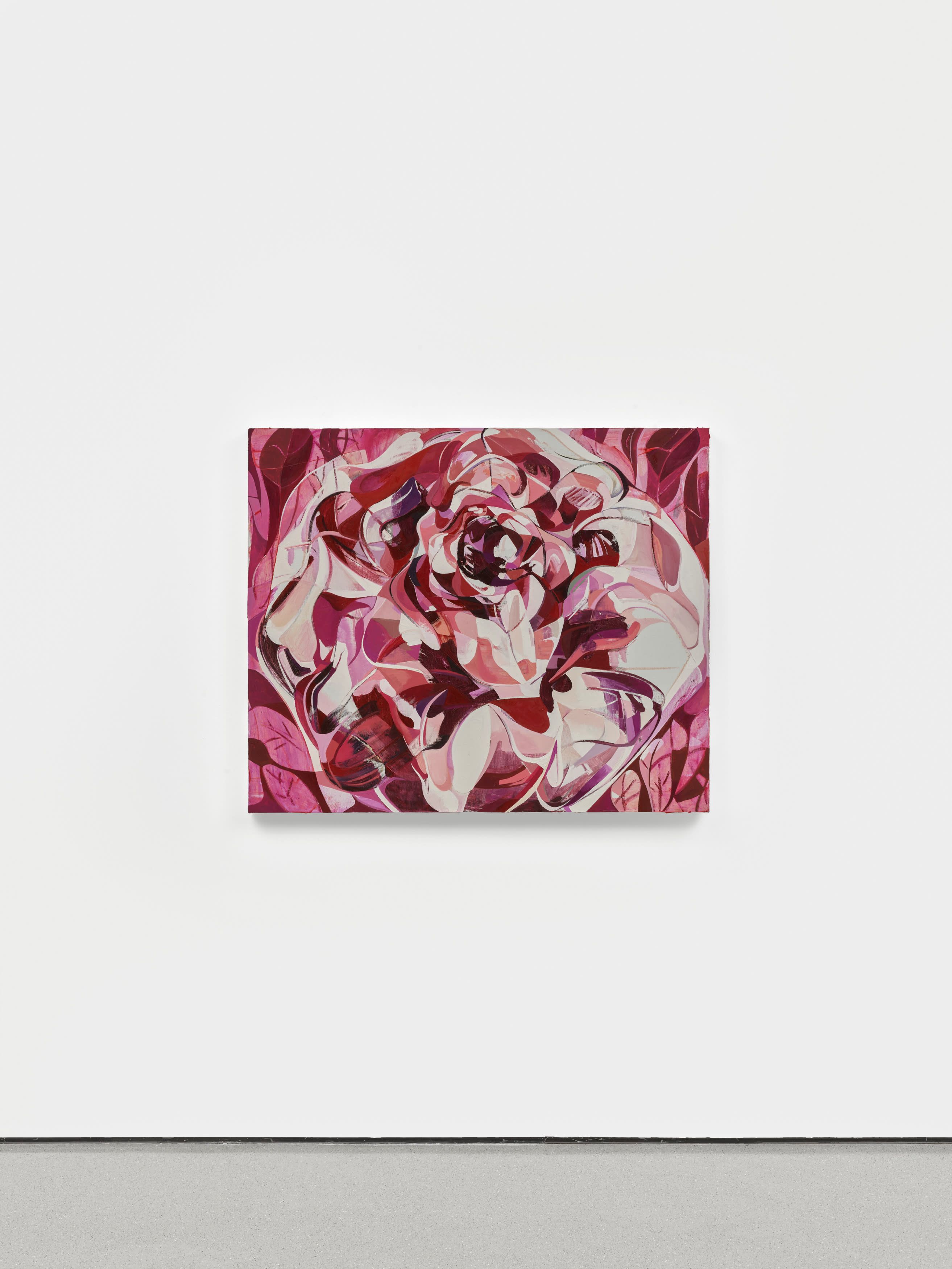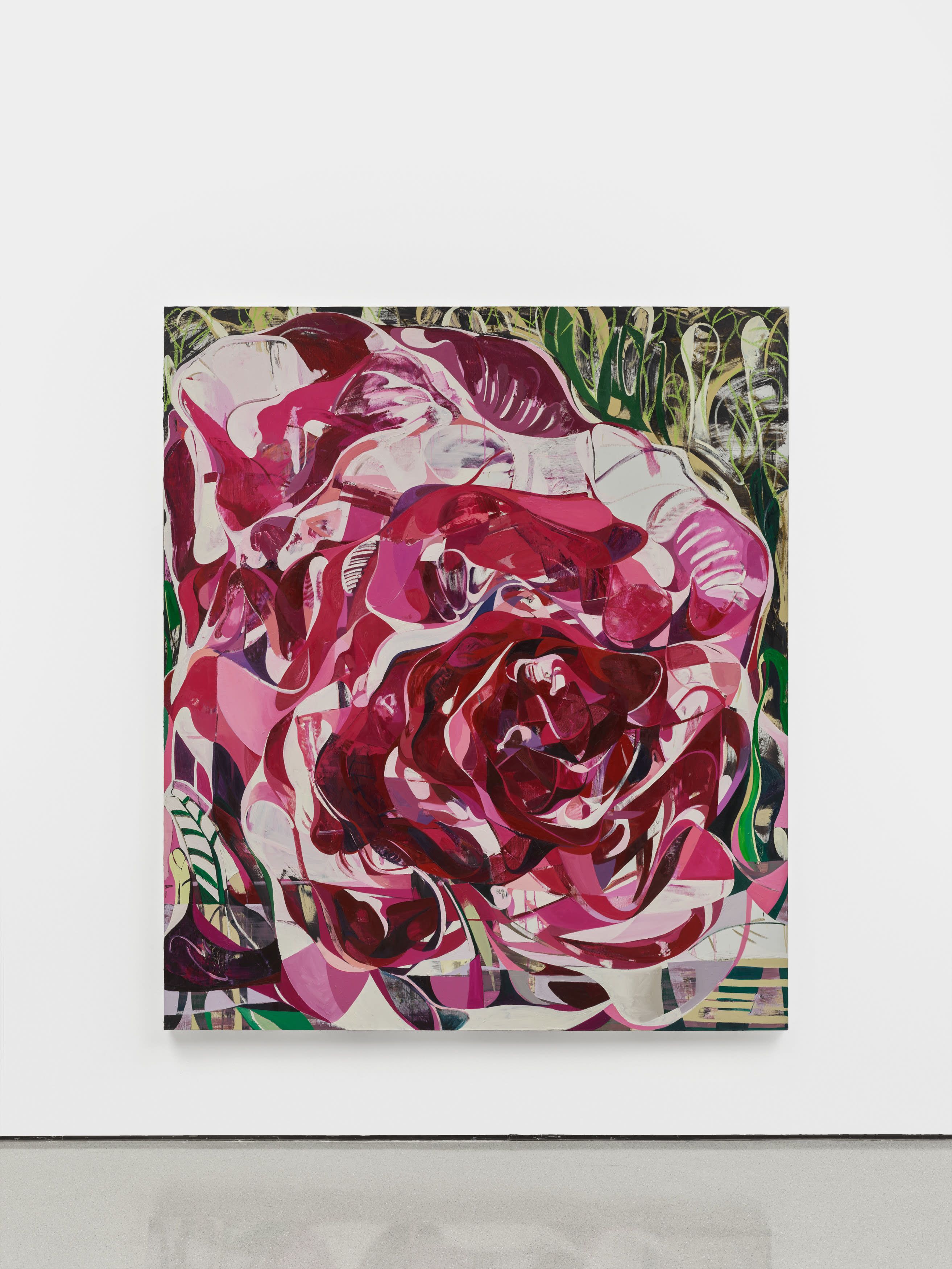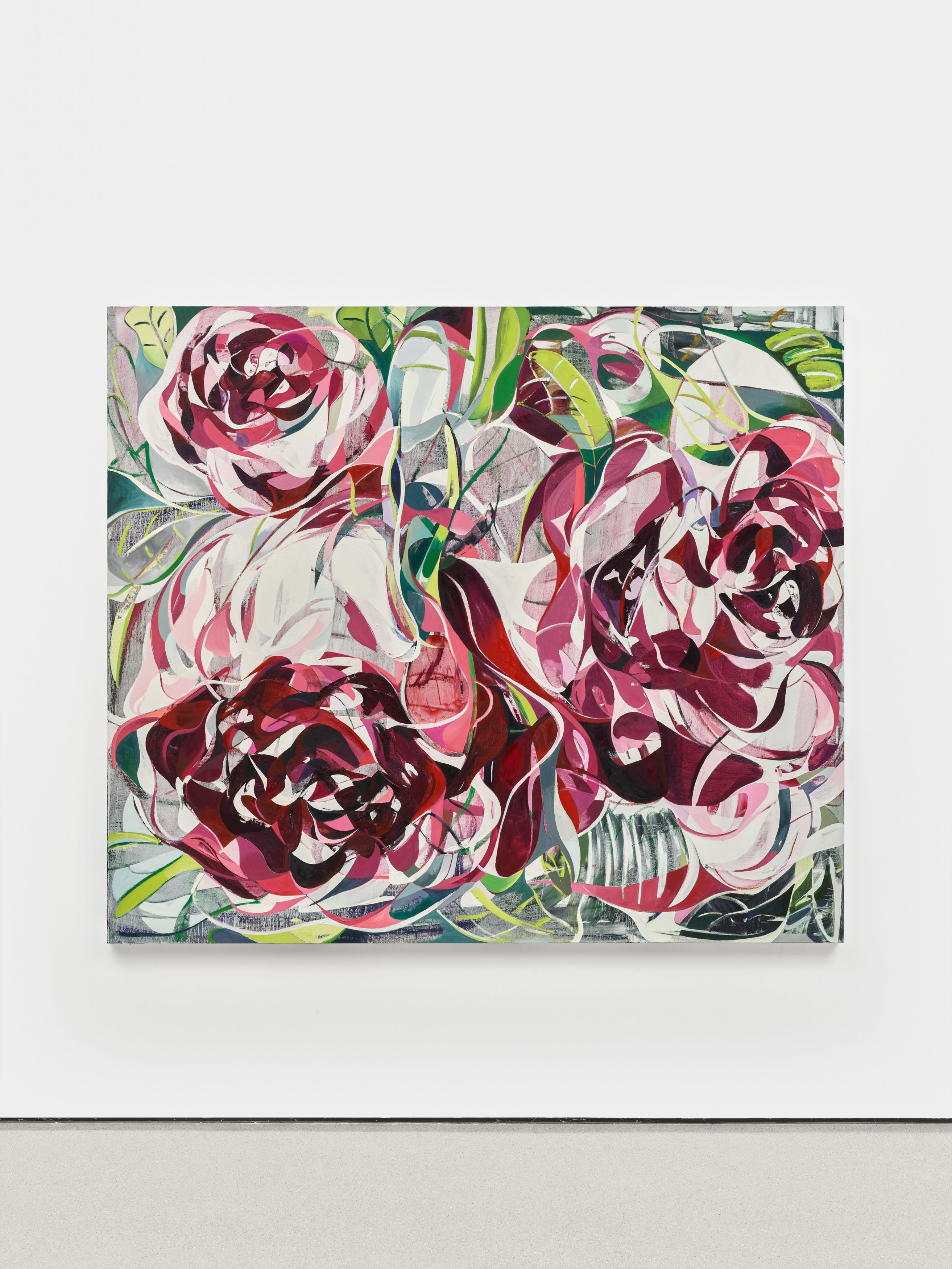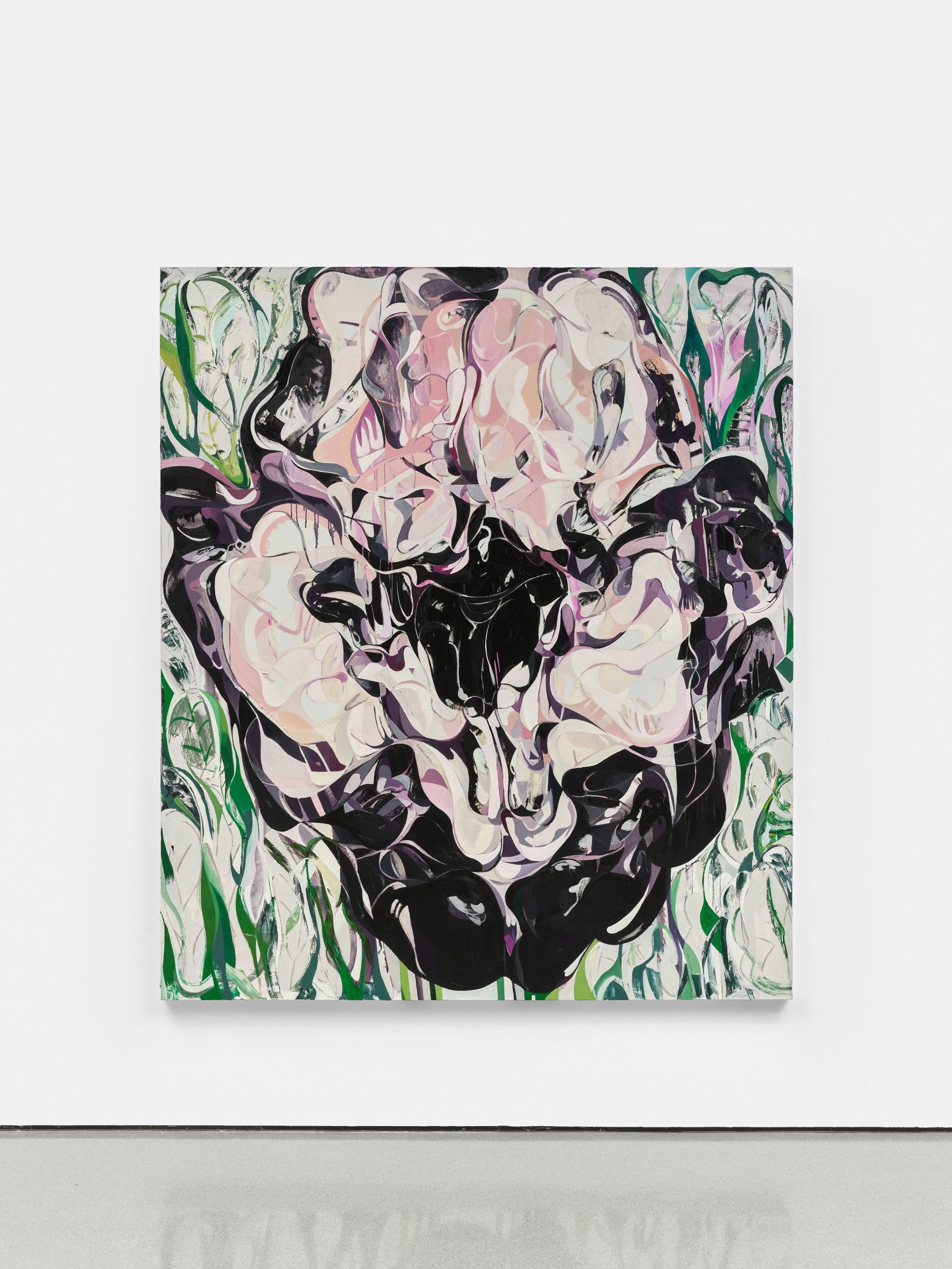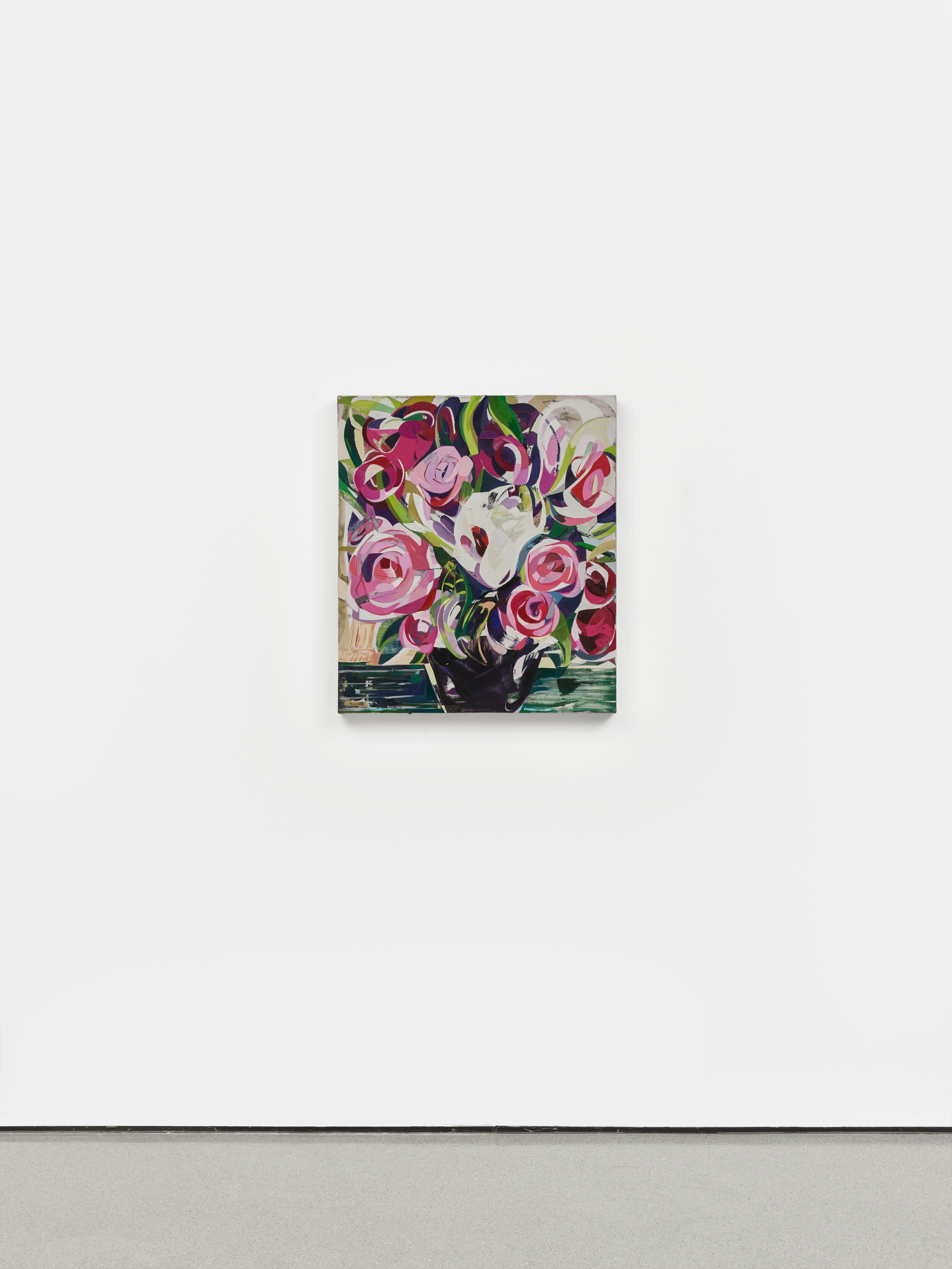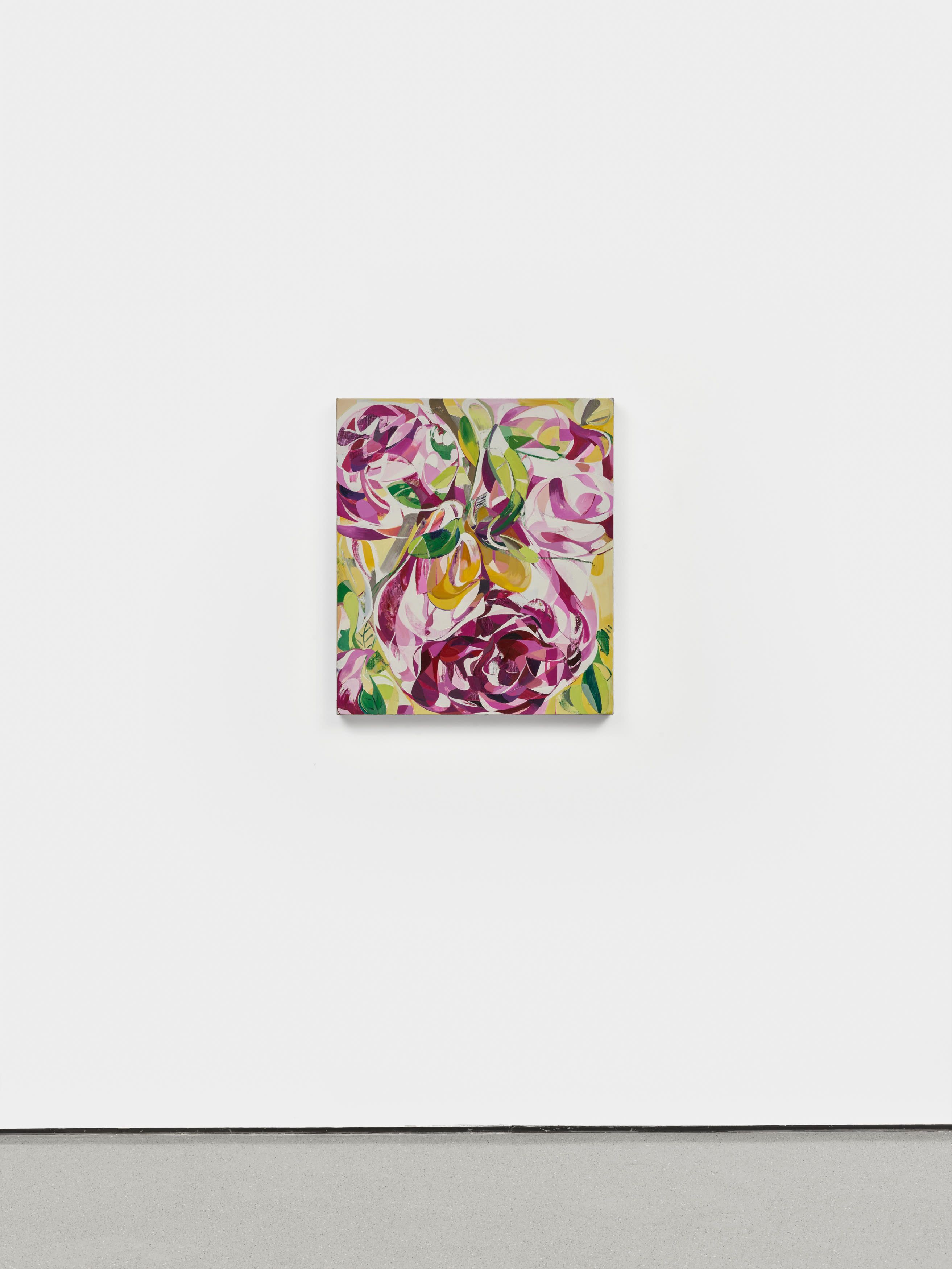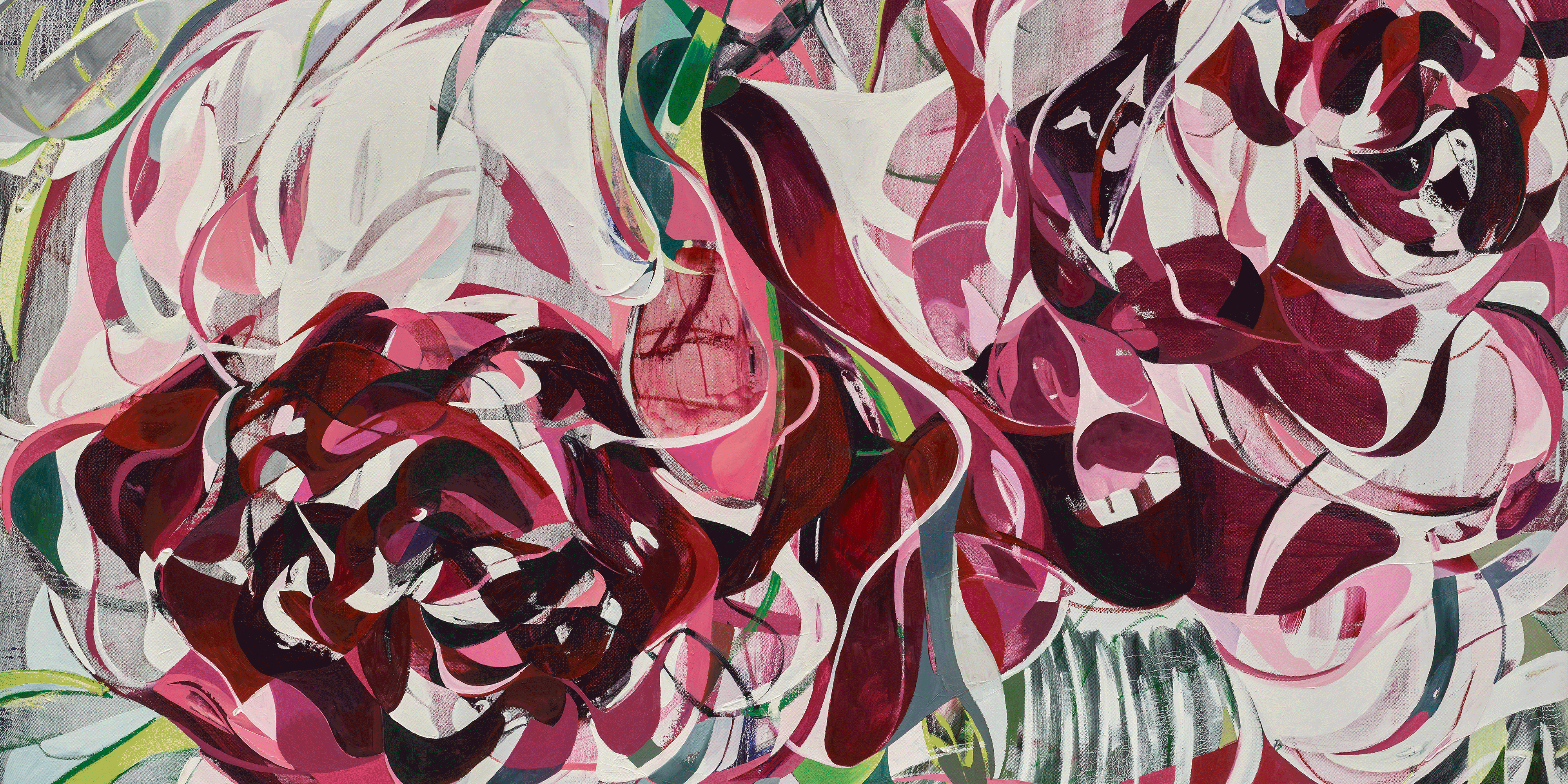
Zipiao ZhangBlooming II
In partnership with Galerie Derouillon
13 rue de Turbigo
75002 Paris
Artwork
Blooming II
by Delphine Valloire
Zipiao Zhang’s new paintings deliver a sensory jolt. Where social media offers the numbing comfort of filtered reality, Zhang’s work confronts with raw physicality — petals and stems transformed into primal collisions of pigment that seem to vibrate with tectonic energy. These are not delicate still lives but rather forceful declarations, each brushstroke carving deep veins of color that surge across the canvas.
Following the classic “nature mortes” motifs she dissected with her brush in earlier paintings—pomegranates, oysters, and spiders—she presents a new series that captures bouquets of peonies, giant roses, and orchids in full bloom. Pistils, stalks, and petals split, multiply, and unfold, their organs, fluids, and flesh rendered in milky whites and bright violets. Zhang asserts this carnality right down to her modus operandi:
I paint intuitively, which makes the process more complex: I often organically change my path while working. It’s not about going from point A to point B. A lot of the petals I draw are not identical to real petals; their shapes are a bit off, they’re weirder. I associate their textures and colors with flesh and meat: from reds and pinks to the slightly milky beige that sometimes appears in fat. I do not seek the simple rigidity of realism. When I paint flowers, nothing is fixed in advance; they appear to me in the emotion of the moment. I like to give free rein to my imagination.
At thirty-two, Zhang, a rising star of contemporary art in China, embodies a paradox: though she has developed her practice in the spotlight (she was notably included in the Forbes 30 Under 30 Asia list in 2019), she remains remarkably discreet, almost enigmatic. Focused on her inner quest, Zhang approaches painting as an amplifier of emotion, covering the full spectrum of feeling—from euphoria to anxiety—with an aesthetic that embraces imperfection and imbalance as much as precision.
Zhang’s turning point was the outbreak of Covid in the spring of 2020. After emerging from the crisis in 2021, she produced her first series of flowers. The virus changed the way she saw the world and unexpectedly resonated with her childhood. If her father, a professor of animation atTsinghua University, undoubtedly instilled in her a love of drawing, her mother, a doctor, sparked Zhang’s curiosity through late nights at home working on images of throat endoscopies, stomach scans, or gastrointestinal surgeries.
Zhang’s paintings reflect the mysteries and brutal realities of the body by picturing abstractions in flesh. This metaphysical “meat” and her artistic vision merged during her studies at the School of the Art Institute of Chicago in the 2010s, where she often encountered Francis Bacon’s Figure with Meat (1954)— a tribute to Chaïm Soutine’s Carcass of Beef (c. 1925)—in the adjacent museum. After graduating from SAIC in 2015, she devoted herself exclusively to her art. Following the images of bisected carcasses found in the Bacon and Soutine paintings, Zhang’s subjects became open shells, sliced fruits, and flared petals, whose skin she “lifted” to expose them to the light.
In Blooming II, her first solo exhibition in Europe, Bouquet 03 depicts a frightening beauty, a bouquet of roses bursting with dissonant colors: blood red, scratched flesh, hints of acid green. In Orchid 2401, hallucinatory orchids unfurl in midnight blue and deep burgundy, their curves as majestic as they are carnivorous, in a sensual, spiraling movement that could be ecstasy or agony. The more metaphysical Orchid 2402 stages a singular duel between black and flesh-pink, with delicate violet-lavender against a backdrop of misty grasses. It carries an emptiness—a nest of melancholy—that contrasts with the synesthetic bliss of her four Rose paintings (Rose 2404, Rose 2403, Rose 2402, Rose 2401). The exuberance of Zhang’s paintings evokes intoxicating scents and sounds, a symphony of shifting, sometimes discordant colors, whether the canvas is monumental or modest in scale.
Every day, Zhang follows a strict studio routine, then runs several kilometers to exhaust her body. Nothing is allowed to disturb the solitude and silence in which she listens to her inner world, unconcerned with preparatory sketches, sharpening her perception. “Intuitions are as dangerous as sparks from a flame,” says Zhang. “If you let them run wild, you risk losing everything. I know my limits, so I tend to control and transform this flow of intuitions, this inspiration so rare that it must be captured.”
In this creative process, Zipiao Zhang calls to mind two artists known for their radical exploration of biomorphic abstraction. One of course thinks of Georgia O’Keeffe—whose works Zhang encountered in Chicago—and her depiction of an all-powerful flora with petal-like skin, a metaphor for impassioned sexuality. Zhang’s quasi-mystical mission echoes what O’Keeffe described in a 1925 letter to her friend and patron Mabel Dodge Luhan: “A woman who has lived many things and who sees lines and colors as an expression of living – might say something that a man can’t – I feel there is something unexplored about woman that only a woman can explore. Men have done all they can do about it.” (1)
The physicality and spontaneity of Zhang’s practice are also resonant with Hilma af Klint’s. At the very beginning of her abstraction in 1907, af Klint executed the large-scale series The Ten Largest: floral forms painted without preparatory drawings, guided only by the sheer force of her brushstroke.
Gesture and intuition likewise carry Zhang toward an exacerbation of the senses—movement and vision—becoming a performance in itself. One thinks of how Susan Sontag described Antonin Artaud’s aesthetic: “He sees art as an action, and therefore a passion, of the mind. The mind produces art. And the space in which art is consumed is also the mind—viewed as the organic totality of feeling, physical sensation, and the ability to attribute meaning.”(2) More than revealing a rose or an orchid, what Zipiao Zhang dares is a catharsis of the soul.
For more information, please contact info@salon94.com
Press
Whitewall
